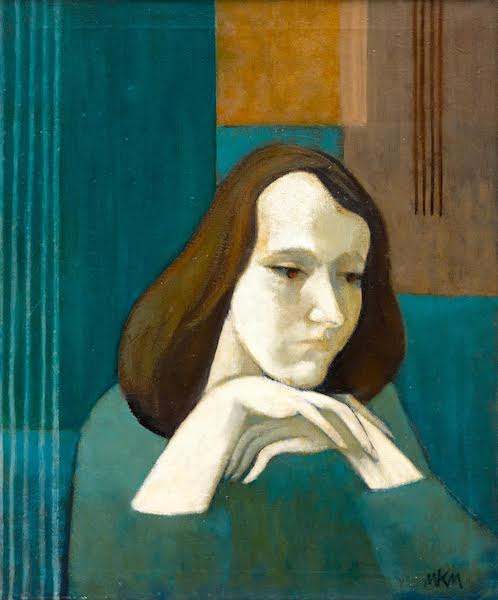Biography
Margit Muzslai Kampis was a student of István Csók, Oszkár Glatz and Károly Lyka at the Hungarian Academy of Fine Arts from 1916 to 1923. Organized by the college, under the leadership of István Csók, Gyula Rudnay and Dezső Pécsi Pilch, she participated in the painting studios of the Pécs artist colony several times in the summer of the 1920s, and in 1923 as a scholarship holder. In 1925, she received the commendation of the Merse Pál Society of Szinyei. She was a member of the New Group of the Association of Hungarian Women Artists, the 'female New Eight', in 1931 she participated in the organization's joint group exhibition at the National Salon. At that time, the influence of art deco and expressionism is characteristic of her paintings, conventional themes appear with definite contours and colorful, stylized decorativeness. During this period (the 1930s), in addition to oil paintings and graphics, she also undertook mural work, as well as magazine illustrations and book cover designs. She married art historian Antal Kampis (1903-1982) in the 1920s, and they later divorced.
In the 1950s, when Antal Kampis was imprisoned by the ÁVH (Hungarian Secret Police), Muzslai Kampis and Margit Kampis lived first in Ceglédbercel, then moved back to Budapest, in different apartments. Back in July 1948, she depicted the "colorful dream world of the Pioneer Republic" on the facade of a station building of the Pioneer Railway, but after that she was forced to give up art. She worked as a technical draftsman at the Budapest City Planning Institute, BUVÁTI. She retired from there in 1961.
She then moved to her son in Kaposvár, and then in 1962 to Pécs. At the age of 64, she started her artistic work again here in Pécs. This old-age painting is characterized by the creation of a youthfully fresh, autonomous pictorial world that was not created out of the weariness of earlier painterly virtues, and not adjusted to the expectations of the subsistence painting of the era. In her still lifes, landscapes and cityscapes, the uniform color patches of forms approaching geometric abstraction, built from a narrow set of motifs, indicate puritanical simplicity. The Janus Pannonius Museum - where in the 1960s and 70s he took on occasional work as a draftsman and decorator - twice organized an exhibition of her works.

